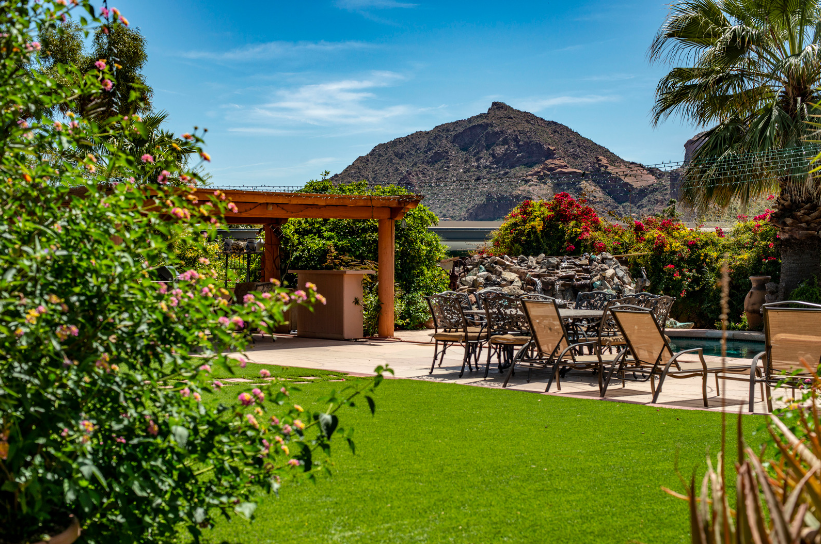
With our mild climate and breathtaking views, it's no wonder that outdoor living is a way of life for many Richmond residents. Whether you have a spacious backyard or a cozy patio, there are endless opportunities to transform your outdoor space into a stylish and inviting oasis. Here's some inspiration to help you elevate your patio and outdoor living experience in Richmond, BC. Embrace Natural Elements Richmond's natural beauty provides the perfect backdrop for your outdoor oasis. Embrace the natural elements by incorporating wood, stone, and greenery into your patio design. Opt for sustainable materials like reclaimed wood or locally sourced stone to add character and charm to your outdoor space. Consider adding a pergola or trellis adorned with climbing vines to create a sense of intimacy and shade. Create Zones for Relaxation and Entertaining Make the most of your outdoor space by creating distinct zones for relaxation and entertaining. Set up a cozy seating area with comfortable outdoor furniture where you can unwind and enjoy the sunshine. Add a fire pit or outdoor heater to extend your patio season well into the cooler months. For entertaining, consider adding a dining area with a stylish outdoor dining set where you can host al fresco dinners and BBQs with friends and family. Incorporate Water Features There's something inherently soothing about the sound of running water, making it the perfect addition to any outdoor space. Incorporate water features like fountains, ponds, or even a small waterfall to create a sense of tranquility and serenity in your backyard. Not only do water features add visual interest, but they also attract birds and wildlife, further enhancing your outdoor experience. Add Lighting for Ambiance Extend the hours you can spend outdoors by adding strategic lighting to your patio and outdoor living areas. String lights or fairy lights create a warm and inviting ambiance, perfect for evening gatherings or romantic dinners under the stars. Incorporate solar-powered lights along pathways and garden beds to illuminate your space while also being eco-friendly. Personalize with Plants and Greenery Bring your outdoor space to life with lush plants and greenery that thrive in Richmond's mild climate. Create a vertical garden or planters filled with colorful flowers, fragrant herbs, and native foliage to add texture and visual interest to your patio. Consider incorporating edible plants like tomatoes, peppers, and strawberries for a functional and beautiful addition to your outdoor space. Make it Cozy with Outdoor Textiles Add warmth and comfort to your patio with outdoor textiles like throw pillows, blankets, and rugs. Opt for weather-resistant fabrics that can withstand the elements while still adding style and personality to your outdoor seating area. Choose colors and patterns that complement your existing decor and create a cohesive look throughout your outdoor space. From relaxing weekends spent lounging in the sun to lively gatherings with friends and family, your outdoor space has the potential to be so much more than just a patio. With a little creativity and inspiration, you can transform your backyard into a stylish and inviting oasis that reflects your unique personality and lifestyle. So why wait? Contact our landscape design and installation experts today to start planning your outdoor living makeover and make the most of Richmond's natural beauty all year round.
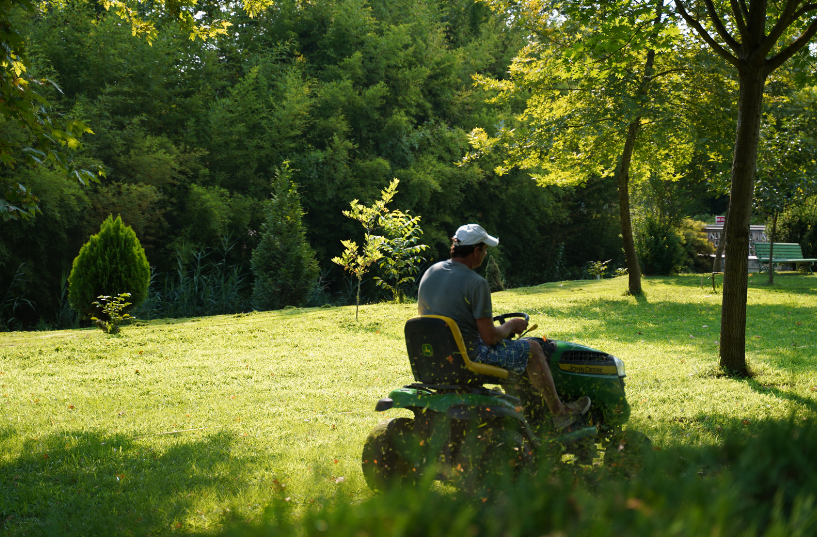
Maintaining a lush, healthy lawn in Richmond, BC requires proper care and attention throughout the seasons. With our mild coastal climate and ample rainfall, we get to enjoy ideal conditions for growing vibrant grass. However, different seasons present unique challenges and opportunities for lawn care. Whether you're a seasoned homeowner or new to Richmond, these seasonal lawn care tips will help you keep your lawn looking its best year-round. Spring: Revitalize and Prepare As the weather warms up and plants begin to emerge from dormancy, spring is the perfect time to revitalize your lawn after the winter months. Start by raking away any debris, such as leaves and dead grass, to allow for better air circulation and light penetration. This will help prevent mold and disease from taking hold. Next, aerate the soil to alleviate compaction and improve water and nutrient absorption. Overseeding bare patches and applying a balanced fertilizer will promote healthy growth and fill in thin areas. Be sure to choose a fertilizer specifically formulated for spring use, with a higher nitrogen content to encourage green-up and vigorous growth. Finally, establish a regular watering schedule, aiming for deep, infrequent watering rather than frequent shallow watering. This encourages deep root growth and helps your lawn withstand the drought conditions that we often face later in the season. Summer: Maintain and Protect Summer in Richmond brings warm temperatures and increased sun exposure, which can stress lawns if they are not properly cared for. To keep your lawn healthy and vibrant during the summer months, it's essential to practice proper maintenance and protection techniques. First and foremost, adjust your mowing height to a slightly taller setting to provide shade and insulation for the soil. This helps retain moisture and prevents grass from drying out in the heat. While you should mow your lawn regularly, be careful to avoid cutting more than one-third of the grass blade at a time to prevent shock and stress. During periods of drought or high temperatures, it's crucial to water your lawn deeply and consistently. Water in the early morning to minimize evaporation and fungal growth, and consider investing in a rain gauge to monitor rainfall and adjust your watering schedule accordingly. To further protect your lawn from summer stressors, consider applying a summer fertilizer with slow-release nitrogen to sustain growth and color without promoting excessive shoot growth. Additionally, spot-treat any weeds that may emerge with an appropriate herbicide, taking care to follow label instructions and avoid harming desirable plants. Fall: Prepare for Winter As temperatures begin to cool down in the fall, it's time to prepare your lawn for the winter ahead. Continue to mow your lawn as needed, but gradually lower the mowing height to help prevent snow mold and other fungal diseases. Fall is also an excellent time to aerate and overseed your lawn to promote healthy root growth and fill in any bare or thin areas. Apply a fall fertilizer with higher phosphorus and potassium content to encourage root development and winter hardiness. Finally, rake away any fallen leaves and debris to prevent them from smothering your lawn over the winter months. Consider mulching leaves with a mower to break them down into smaller pieces that can decompose more easily and provide valuable nutrients to the soil. By following these seasonal lawn care tips, you can ensure that your lawn remains healthy, vibrant, and resilient throughout the year. With proper care and attention, you'll be rewarded with a lush, green lawn that enhances the beauty of your outdoor space and provides a welcoming environment for family and friends to enjoy. Need a little help putting these tips into action? Our lawn care professionals are here to assist you with any and all of your lawn care and landscaping needs!

Nestled along the majestic Fraser River, Richmond, British Columbia, is a vibrant city renowned for its multicultural charm, stunning landscapes, and thriving community spirit. As the city evolves, so do its landscape design trends, reflecting a harmonious blend of natural beauty and urban sophistication. In this blog post, we explore the evolving landscape design trends shaping Richmond's outdoor spaces. Embracing Sustainable Practices: In a world that is increasingly conscious of environmental impact, Richmond's landscape designers are prioritizing sustainable practices. From native plant selections that promote biodiversity to water-wise irrigation systems and permeable paving solutions, sustainability is at the forefront of landscape design. Homeowners and businesses alike are opting for eco-friendly landscapes that not only reduce their environmental footprint but also enhance the beauty of Richmond's surroundings. Incorporating Urban Agriculture: Richmond's fertile lands and temperate climate make it an ideal setting for urban agriculture initiatives. More and more landscape designs in Richmond are incorporating edible gardens, rooftop greenhouses, and community plots. From backyard vegetable patches to communal orchards, residents are embracing the farm-to-table movement, reconnecting with the land, and fostering a sense of community through shared agricultural spaces. Integrating Modern Aesthetics with Natural Elements: Richmond's landscape design trends strike a delicate balance between modern aesthetics and natural elements. Contemporary outdoor spaces feature clean lines, minimalist layouts, and sleek materials, seamlessly integrated with lush greenery, tranquil water features, and rugged stone accents. This fusion of urban sophistication and natural charm creates visually stunning landscapes that evoke a sense of serenity and harmony with the surroundings. Designing Multifunctional Outdoor Spaces: With the rise of remote work and outdoor living, Richmond's landscape design trends prioritize the creation of multifunctional outdoor spaces. From versatile patios equipped with cozy seating areas and fire pits to innovative rooftop gardens and outdoor kitchens, homeowners are transforming their outdoor environments into extensions of their indoor living spaces. These versatile outdoor retreats serve as gathering hubs for socializing, entertaining, and unwinding amidst the beauty of nature. Embracing Cultural Diversity in Design: Richmond's diverse cultural tapestry is reflected in its landscape design trends, with influences from around the globe shaping the city's outdoor spaces. From traditional Japanese gardens with tranquil koi ponds to vibrant Chinese courtyards adorned with ornate pavilions and decorative motifs, Richmond's landscapes celebrate cultural heritage while embracing contemporary design principles. This rich tapestry of cultural influences adds depth and character to the city's outdoor environments, offering residents and visitors alike a glimpse into the world's diverse landscaping traditions. Richmond, BC, is a city where nature and urbanity coalesce, and today's landscape design trends reflect this unique synthesis. From sustainable practices and urban agriculture to modern aesthetics and cultural diversity, Richmond's outdoor spaces are evolving to meet the needs of a dynamic community while preserving the natural beauty that defines the region. As the city continues to grow and innovate, its landscapes will undoubtedly remain a testament to the enduring harmony between human creativity and the splendor of the natural world.
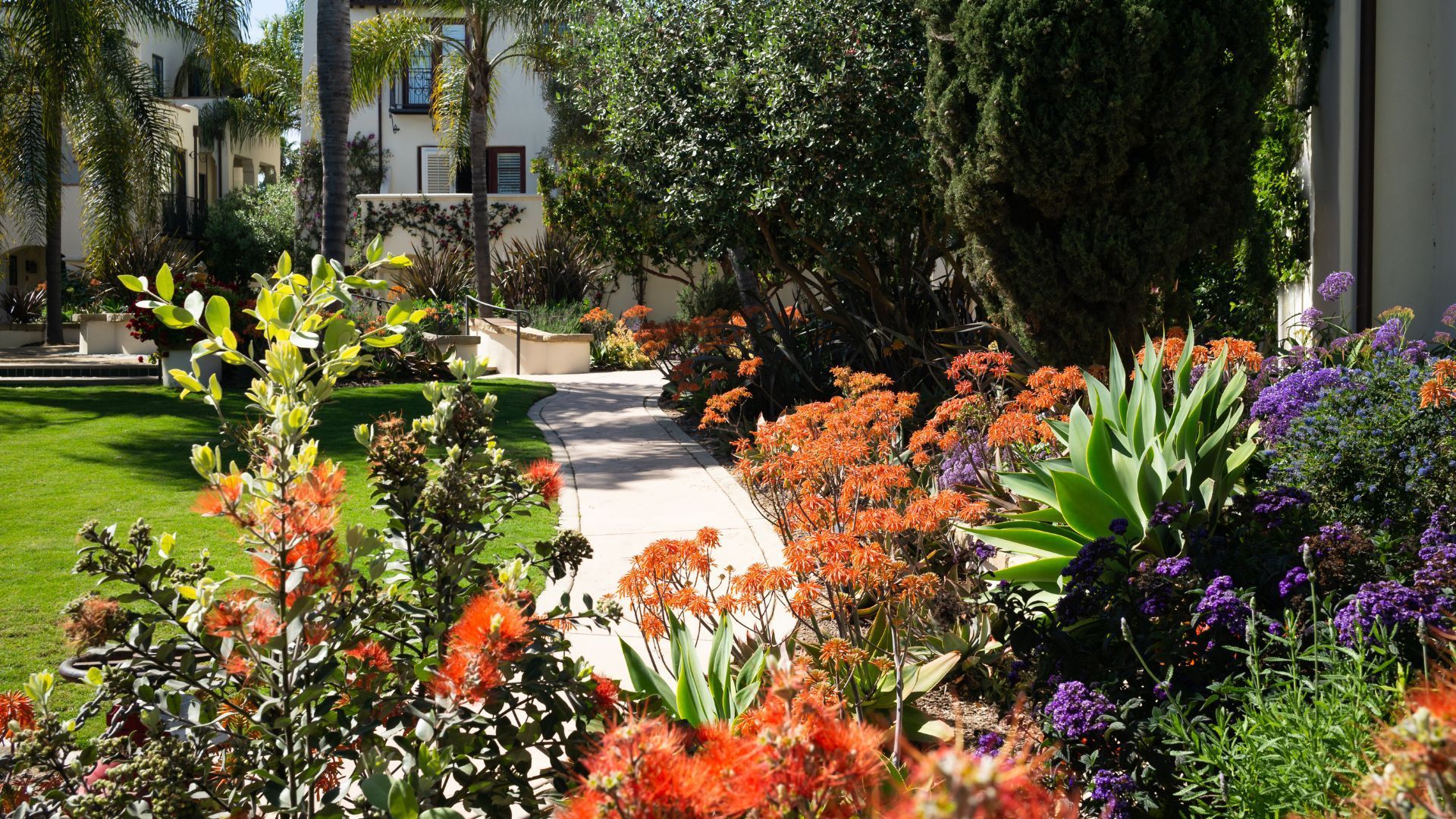
Snow can be beautiful. Dormant tree trunks and branches, however, aren’t always the nicest things to look at in the winter. Since most plants go dormant or die during the winter, you might think that your landscape has no choice but to be brown and boring when it is cold outside. Fortunately that is not true! There are many types of plants you can add to your landscape that will give it color and contrast even during the coldest part of the year. Holly bushes are often associated with Christmas (and their berries are replicated in many seasonal decorations). Not only are their leaves evergreen, but they produce red or gold berries just about the time that most other plants have lost all of their leaves. Just be sure to plant at least two holly bushes if you want berries - you will need both a male and a female plant for pollination to occur. Red or yellow twig dogwood shrubs will lose their leaves in the winter, but that doesn’t mean they lose their color! Their branches themselves are brightly colored, giving your landscape both color and texture (they look especially stunning when the ground is covered in snow!). They are also very cold hardy, so you don’t have to worry about them on even the coldest winter nights. Small or dwarf variety evergreen trees are another great addition to a year-round landscape . Olive trees don’t flower until the spring, but their silvery leaves last all winter, and even their trunks are interesting to admire. Japanese hollies are great for small spaces - their branches grow straight up, so the trees never get more than about two feet wide. Blue arrow junipers grow in a similar way, but they produce their berries in early winter for an extra splash of color. Many varieties of flowers bloom during the winter. Lenten roses are a cold hardy species that bring shades of pink, red, and white to your winter garden. Camellias are evergreen perennials that can grow into small shrubs if left in your flower beds all year, and they bloom in a variety of colors throughout the winter. For one last burst of color just before spring arrives, you can plant snowdrops in the fall. These perennials produce small white and green flowers and will die back and regrow year after year with minimal care. If you are looking for something out of the ordinary, try planting a bed of ornamental cabbage or kale. Their colorful leaves cannot be eaten, but they can bring both color and a unique texture to even the smallest spaces. Be sure to plant these annuals after the heat of summer has passed - they prefer cool nights and tolerate even the coldest winters well. These are just a few of the plants that flower and bring color to a winter landscape. If you can’t decide which to choose or are interested in examining even more options, don’t hesitate to call us!
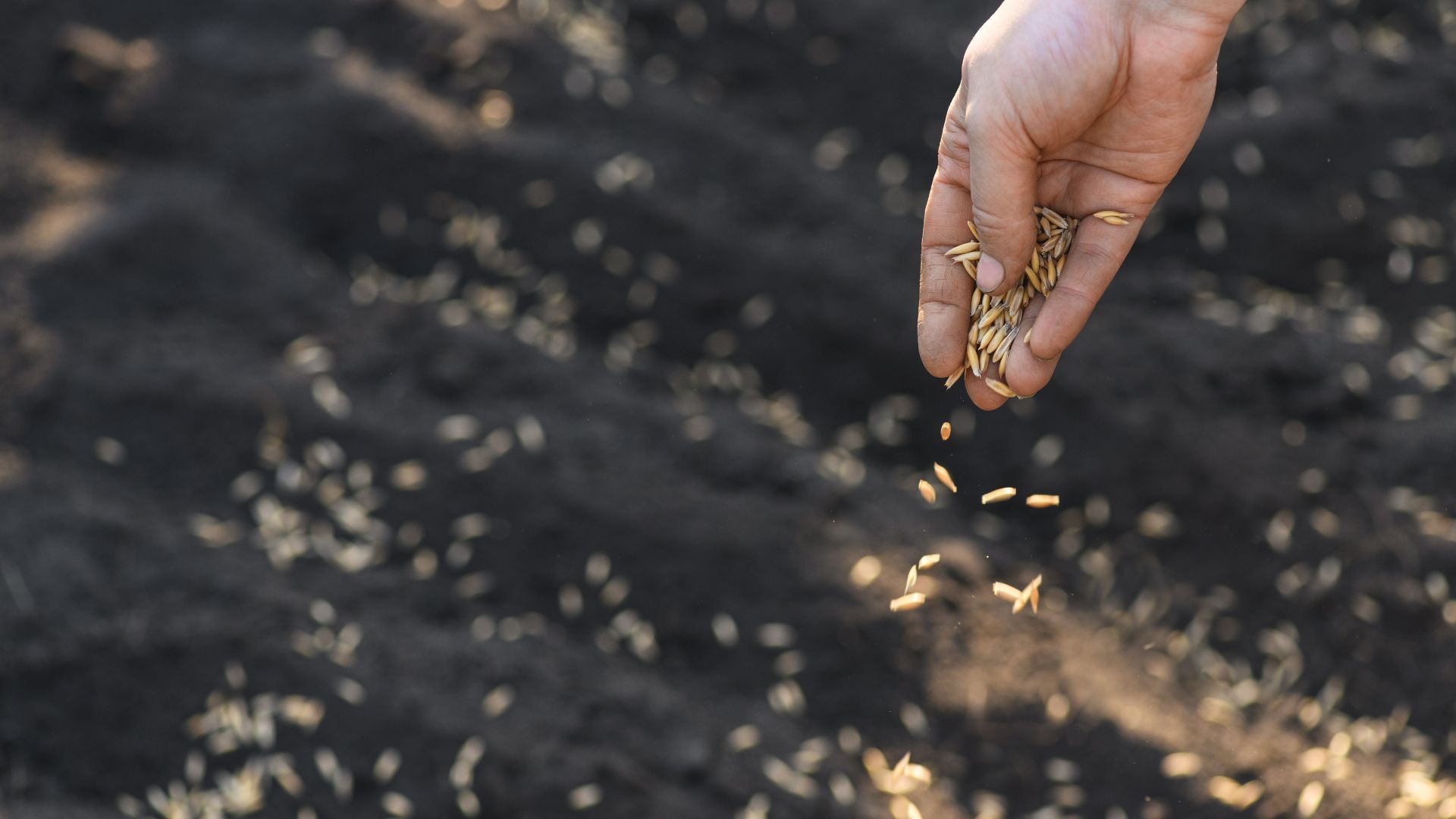
When we think of new growth, we usually think of spring. Dormant plants turn green again, there is plenty of rain, and we are used to filling our flower beds with annual color. If you are planting something other than vegetables and flowers, however, you might be surprised to learn that fall is actually the best time to plant trees and other perennials. Don’t believe us? Here are a few reasons why. It’s how Mother Nature plants seeds . Think about the lifecycle of most plants. They sprout, grow, produce flowers or fruit, then release seeds just before dying or going dormant. These naturally-sown seeds might germinate during the fall and spend the winter developing a strong root system, or they might need cold winter nights to cause germination. If spreading seeds in the fall is how nature has survived for thousands of years, it just might work for us too! The soil is warm . Even though fall nights might be a little chilly, the soil in which you are planting will stay warm for many weeks. Planting during the fall allows roots ample time to dig deep and establish themselves without having to worry about producing leaves and flowers. Even after the first frost, your new plant’s roots will be able to grow for a while since it takes time for the cold to slowly seep into the soil. Fall has fewer weeds and pests . Weeds and pests are the biggest deterrents to healthy plant growth, especially for young plants. When temperatures begin to drop, however, most weeds are finishing their life cycles and most pests have already settled into their winter burrows deep underground. This means that your new plants can grow without competition and without having to defend themselves from the bugs that like to snack on them. It rains more often in the fall . We all know that water is essential for plant growth, especially after sprouting or being transplanted. Fall brings the highest chance of rain, making it easier for you to keep your new plants well watered. Rain water is also better for your plants than well or city water - it has no extra minerals or purifiers that, while good for humans, don’t do your plants any favors. It is the perfect time to be outside . This has nothing to do with the plants, but any gardener will tell you that fall is the perfect time to spend time working in the garden. The air is crisp and clean and the sun is bright but not too hot. While your plants might not reap any benefits from your wellbeing, spending time outdoors in the fall can relieve stress and make you feel better in general! For these reasons and many more, don’t be afraid to plant perennials in the fall. It makes your plants easier to care for, gives them a head start on root growth, and can even boost your health and happiness in the process!
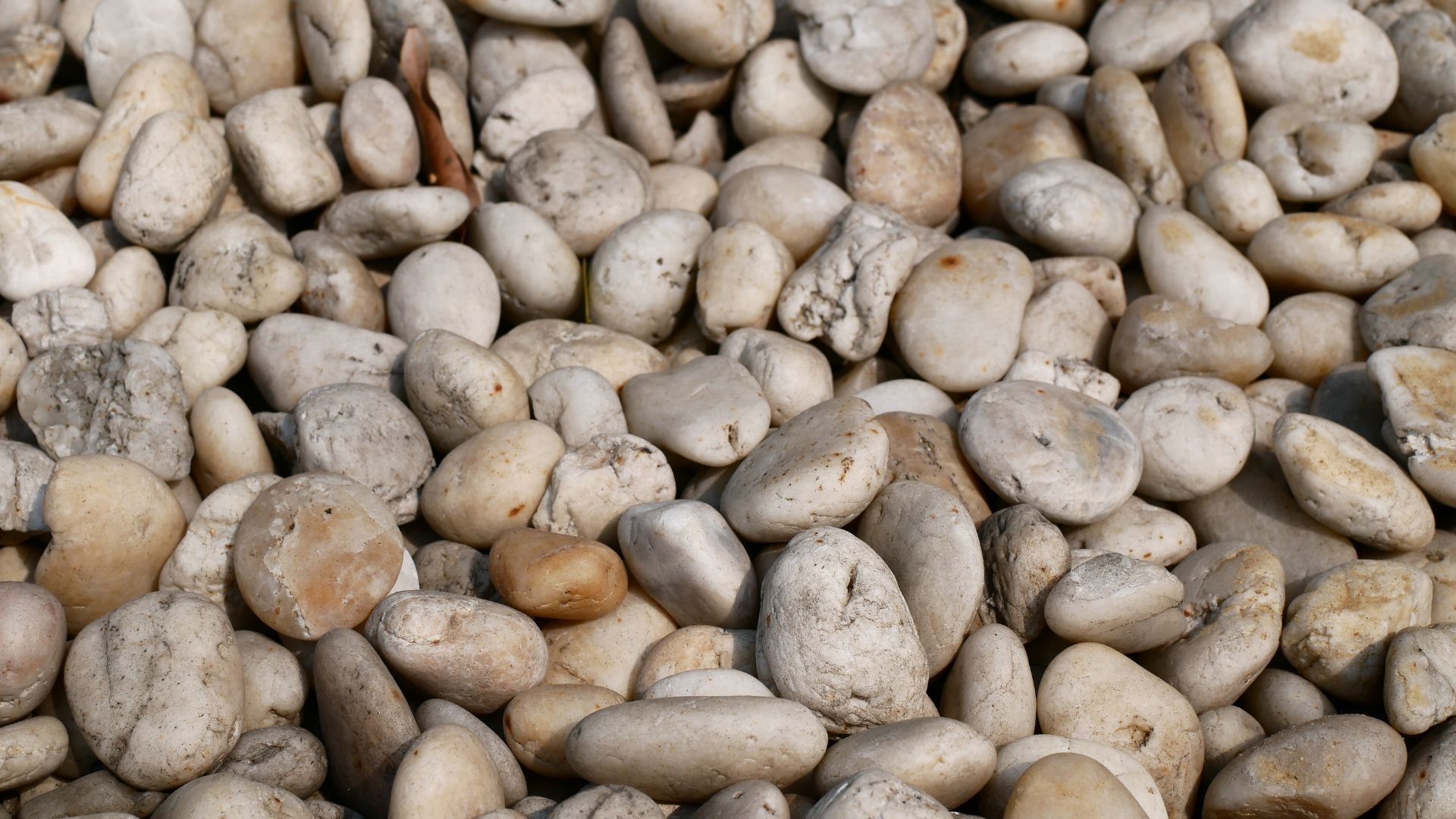
Landscaping rocks, in one form or another, are a part of almost every landscape design. From paving stone paths to sprawling rock gardens, landscaping rocks bring variety and durability to landscapes of all styles and sizes. Choosing the right rocks for your yard or garden can be tricky, however, and finding the perfect rocks to fit your vision can be even harder. Because many landscape rocks are completely natural, selections can change from one month to the next. The supply of manufactured paving stones is more stable, but even these can be difficult to find in the perfect size, shape, and color. To aid you in your search for the perfect rocks, here are a few of our favorite local landscaping rock suppliers. Whether you are looking for inspiration or are ready to bring home a truckload of stone, one of these companies is sure to have what you need! Northwest Landscape and Stone Supply : Located in southern Burnaby, this lawn and garden supply store is well worth driving for a few extra minutes to visit. With everything from pebbles and river rock to basalt columns to frame a walkway or driveway, they are the perfect place to find inspiration (and then take home the materials you need to bring your ideas to life!). You can browse their online catalog at www.landscapesupply.com to get a taste of all that they have to offer. BC Brick Supplies : In addition to a huge supply of brick, BC Brick carries everything from pavers to stone fountains. Since they specialize in stone for vertical applications, this is the perfect place to find rocks for retaining walls or stairs. They also carry everything you need for a stone mailbox, waterfall feature, or window sill. Check out their online store at www.bcbrick.com . StoneArt Miniature Gardens : While definitely a niche stone supplier, StoneArt is the place to go if you want natural-looking stone planters. The planters come in a variety of shapes, colors, and sizes, so you are sure to find the perfect pot whether you want an original design for your herb garden or a birdbath. To see if this style is right for you, take a look at their products and design examples at stoneartgardens.com . Mainland Construction Materials : If you have a particularly large project and need large quantities of quarried rock or gravel, Mainland Construction Materials is a great supplier. While they do not carry decorative or manufactured rock, they deal in bulk and will likely be the most cost effective option if you need to cover a large space with rocks. You can visit them online at mainlandcm.com . After you have found the perfect landscaping rocks, give us a call to take the next steps in your landscaping design and installation. Our professional landscapers will do everything possible to ensure that your project goes smoothly and that your finished lawn and garden are everything you dreamed they would be! Still have questions? Need a quote? Our experts are here to help with all your landscaping needs!
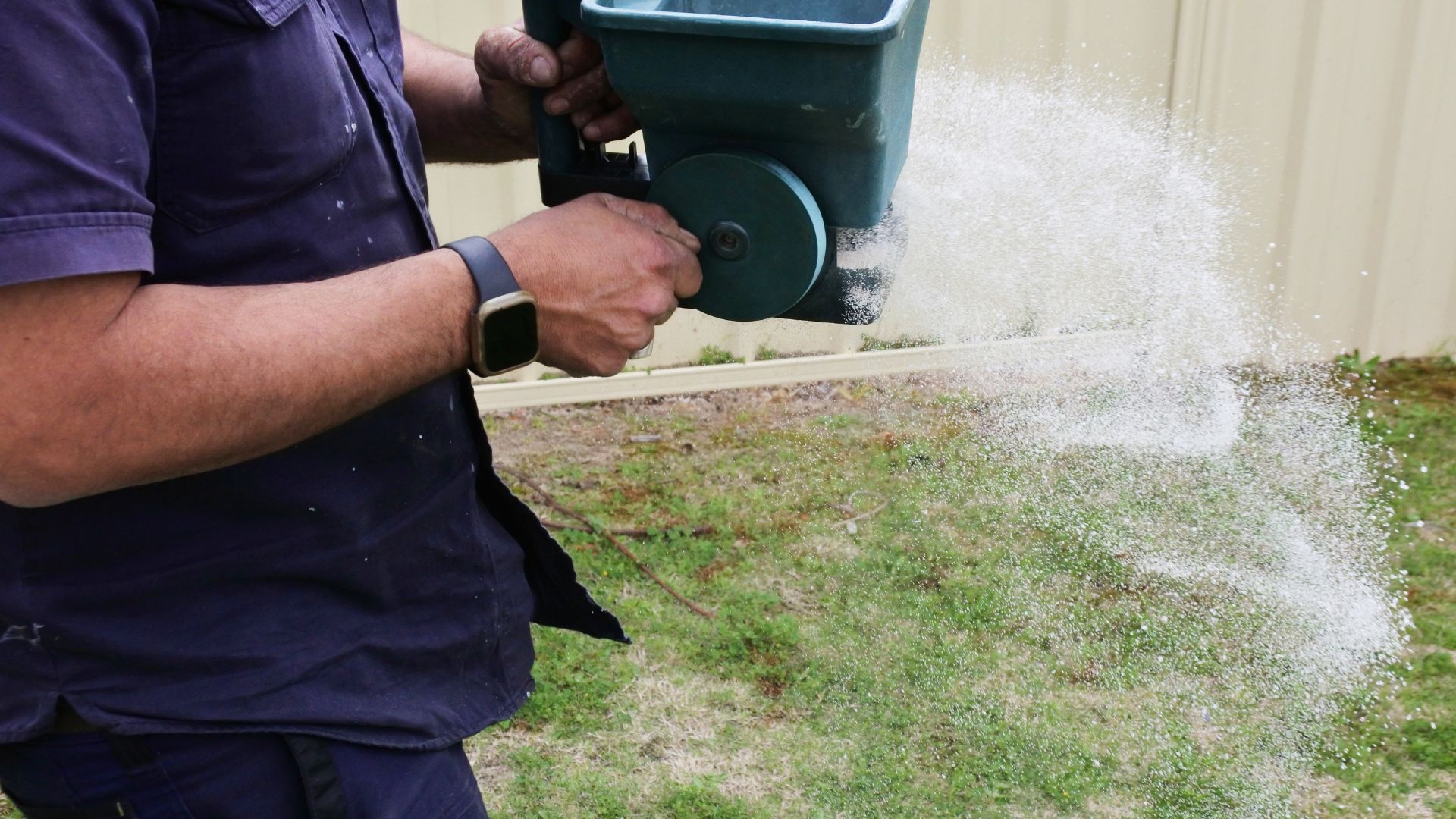
The benefits of fertilizing your lawn in the spring might seem obvious. Grass that is coming out of dormancy will be hungry, and it needs plenty of energy to grow all spring and summer. Fertilizing in the fall, however, might seem like a waste of time. Why would grass need nutrients when it is about to turn brown and stop growing for several months? There are actually several good reasons to fertilize in the fall. First, it allows your grass to come back earlier and healthier in the spring. By providing a consistent supply of nitrogen throughout the winter, fall fertilizer applications keep your lawn from being shocked by the huge influx of nitrogen it will receive in the spring. This prevents extravagant growth in the first part of spring, allowing your grass to instead grow consistently and predictably. Fertilizer also gives your grass a healthy helping of potassium. Potassium promotes root growth and helps your grass’ root system retain water during the cold winter months. It also helps roots absorb the nitrogen and other nutrients they need, ensuring that your yard is simply dormant during the winter, not dead. Strong roots keep your grass firmly attached to the ground so that even a big ice melt won’t damage your lawn. Potassium also increases your lawn’s resistance to disease and the stress that the change in weather brings. In addition to preparing your grass for winter, applying fertilizer in the fall helps your lawn recover from the stresses of summer. During the summer, your grass endures direct sun, heat, and often a good deal of foot traffic. All of these things can wear down its natural defenses. By feeding it in the fall, you are giving your lawn the hearty meal it needs to recover from the summer before it has to face the challenges of winter. It might even thank you by staying green for a few extra weeks! To reap the benefits of a fall fertilizer application, we recommend applying your last fertilizer treatment of the year two or three weeks before the first frost date. In the Richmond area, the first frost occurs around October 19. The ideal time to fertilize is therefore late September or the first week of October. A balanced fertilizer will always help, but there are also many fertilizers available that are specifically formulated for fall feedings. These provide high amounts of both nitrogen and potassium, and the nitrogen is in both quick and slow-release forms so that it lasts the entire winter. As with any fertilizer application, it is also important to give your lawn the proper amount of fertilizer and to apply it during favorable weather conditions. If you need expert advice on the type and amount of fertilizer to use or best time to apply it, our lawn care professionals are here to help. All it takes to have healthy grass in the winter and greener grass in the spring is a phone call to the experts at Richmond Landscaping Trimzi !
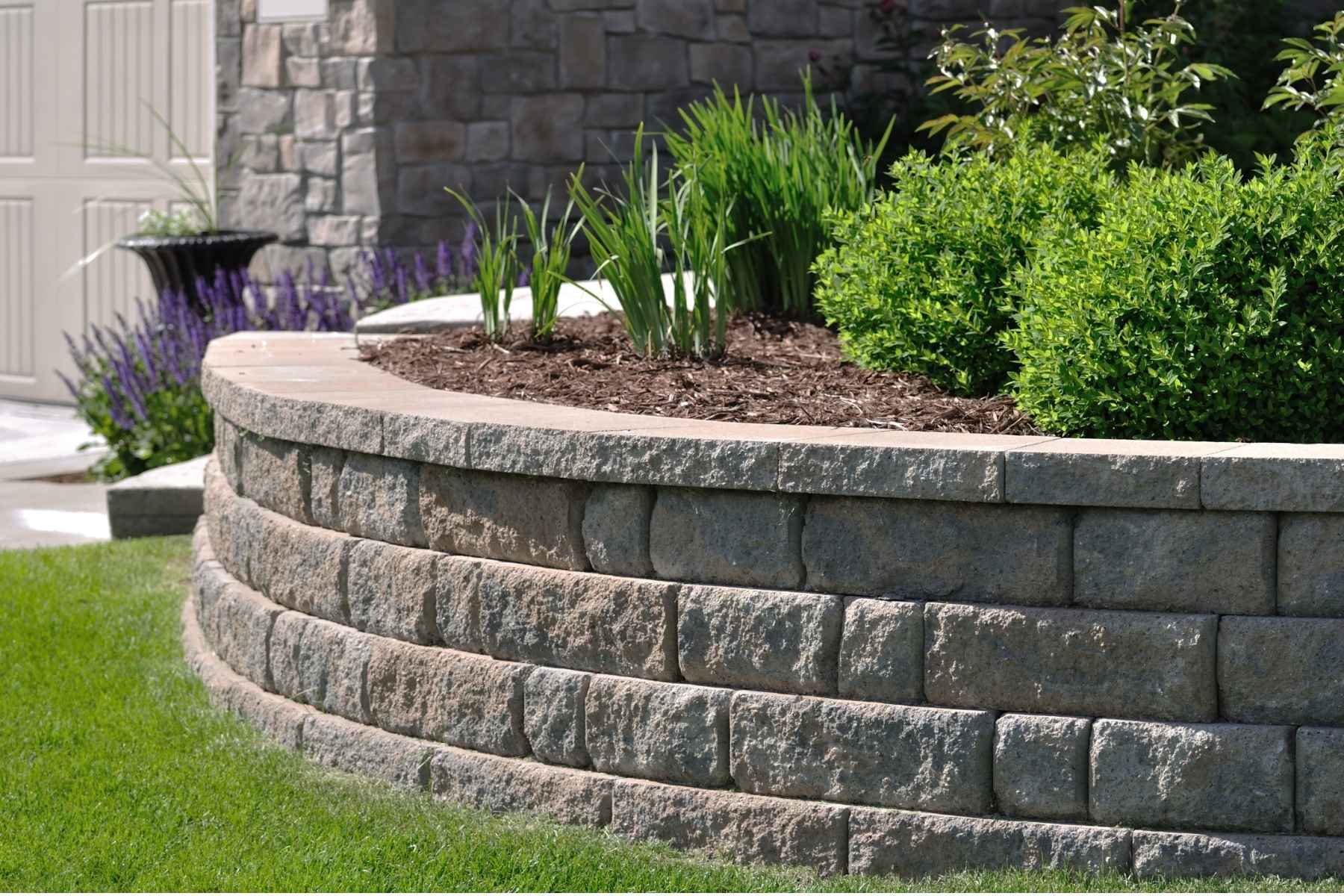
Do I Need a Retaining Wall? Retaining walls are a common landscaping element for a variety of reasons. In some yards, they are purely cosmetic, giving definition to a lawn’s borders or providing a point of interest in the middle of a large, monochromatic yard. In most cases, however, the retaining wall was built for a reason other than aesthetics. Retaining walls can serve several purposes, all of which contribute to a healthy and attractive outdoor space. When most people think of retaining walls, they think of soil erosion. And they are correct in doing so - preventing soil erosion is the most common reason for installing a retaining wall. If your yard has a steep slope or if you have ever noticed soil piling up near your home (or washing away and revealing more of your home’s foundation), you probably need a retaining wall. Heavy rains can wash the top layer of soil away from even a gently sloping lawn. In addition to the mess this can make wherever the soil settles, even this little bit of erosion can carry away essential nutrients from your lawn, preventing your grass and other greenery from thriving. Flowing water can even seep into your basement if it is allowed to go where it pleases! A retaining wall can divert water so that it can safely leave your property while holding your soil in place so the water doesn’t take anything extra with it. Water flowing down a slope isn’t the only type of water that can harm your lawn. Standing water can damage or kill your grass and plants, and it is also a favorite breeding ground for mosquitoes. If you notice water pooling in your yard, a retaining wall can help improve your lawn’s drainage. Due to the solid nature of the materials they are made of, most retaining walls are constructed with integrated drainage systems that will guide water out of your yard and into a storm drain. A retaining wall can also make your outdoor space more usable. Instead of a sloped yard, you can have two level surfaces divided by an attractive retaining wall. If you have ever wanted to install a patio or garden shed but have been unable to do so because you don’t have a flat surface for it, you might need a retaining wall. Level yards are also better for gardening, playing sports, and most other outdoor activities. They can even provide built-in seating around a firepit or near a patio! There are as many reasons for building retaining walls as there are homes in Richmond. Whether you have been watching your soil wash away every time it rains or just want to divide your backyard into two (or more) highly-functional areas, our experts are here to help you through the entire design and construction process. All you have to do is give us a call! Still have questions? Need a quote? Our experts are here to help with all your landscaping needs!

How Do I Manage My Landscaping When I Have Dogs? Dogs may be man’s best friend, but they often cause more headaches than good when it comes to your lawn and landscaping . From chewed up plants to running tracks along the fence, our canine companions can make maintaining a great looking yard feel impossible. It is possible to have happy pets and a healthy lawn, however. With proper planning and a little extra vigilance on your part, your landscape can thrive right alongside your four-legged friend. Choosing a resilient grass for your lawn helps it to withstand the wear and tear that comes with a playful or curious dog. Bermuda grass is a great warm-season option, while tall fescue is one of the sturdiest cool-season grasses. Either of these will withstand more paw traffic than most other species, allowing your dog to frolic, roll, jump, and bask in the sun without harming your lawn. Even the strongest grass will not survive constant, heavy use, however. If your dog loves to run up and down a specific fence line, consider installing a paving stone path along his or her favorite route. Instead of a dirt track in your yard, you’ll have added a durable and attractive design element to your landscape. Your guests will never guess that your gorgeous garden path actually serves a very practical purpose! Another of the biggest lawn issues that dogs cause is yellow stains. Dog urine contains high levels of nitrogen, which can “burn” your grass, causing it to turn yellow or even die. While you could follow your pup around with a garden hose every time he relieves himself so you can wash the urine down into the soil before it causes harm, there is a much easier way to protect your lawn. Though it takes a small investment of time in the beginning, training your dog to only use a certain small section of your yard as his bathroom will protect the rest of your grass for the rest of your dog’s life. If you have an out-of-sight area that you don’t mind sacrificing, train your pet to only urinate here. You can also create a landscaping element that doubles as a dog potty - a nicely defined patch of clover (which does not stain the way other ground covers do) or a small rock garden is perfect for this. All these methods will help protect your grass, but what about other landscaping plants? The best way to protect both plants and pets from harm is to separate them with a fence or wire cage. Depending on your dog’s personality, a charming little picket fence around your garden might be all it takes to save your plants. Even wire netting can be incorporated in ways that are both effective and visually appealing! While maintaining a stunning lawn and landscape takes a little more work if you live with a dog, it is very possible. You don’t have to choose between your pet and your plants - call us today for a dog-friendly landscaping solution for every situation! Still have questions? Need a quote? Our experts are here to help with all your landscaping needs!

